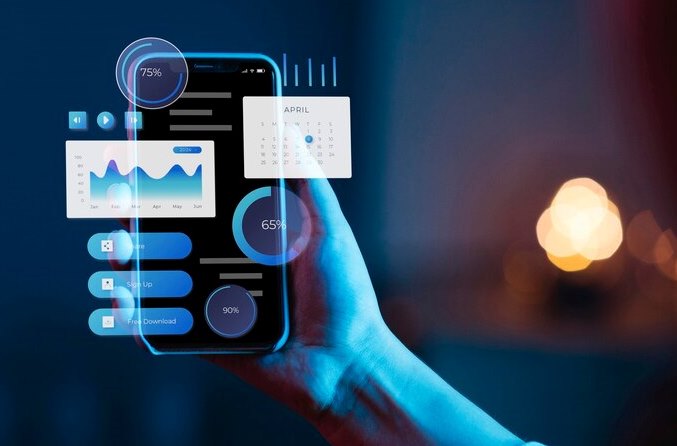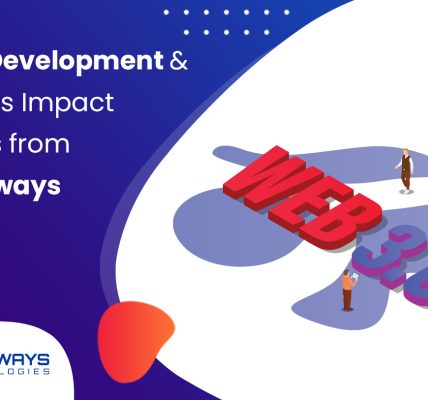In the rapidly evolving world of mobile app development, staying ahead of the curve is essential for creating apps that not only function seamlessly but also provide an engaging user experience. Innovative techniques for mobile app developers? Here, we delve into several innovative techniques that mobile app developers can adopt to enhance their craft and build standout applications.
1. Embrace Cross-Platform Development
Cross-platform development frameworks such as Flutter and React Native have gained significant traction. These tools allow developers to write code once and deploy it on both iOS and Android platforms, drastically reducing development time and costs. Flutter, developed by Google, uses the Dart language and provides a rich set of pre-designed widgets, while React Native, backed by Facebook, leverages JavaScript and React. Both frameworks enable high-performance and native-like experiences, making them ideal for developers looking to reach a broader audience without duplicating efforts.
2. Implement Progressive Web Apps (PWAs)
Progressive Web Apps (PWAs) offer a middle ground between web and native apps. They are built using standard web technologies like HTML, CSS, and JavaScript but provide enhanced functionalities similar to native apps, such as offline access, push notifications, and home screen installation. PWAs are particularly advantageous for reaching users on various devices without needing to develop separate native applications. They also ensure faster load times and improved performance, contributing to a superior user experience.
3. Leverage Machine Learning and AI
Integrating machine learning (ML) and artificial intelligence (AI) into mobile apps can significantly enhance their functionality and user engagement. Tools like TensorFlow Lite and Core ML allow developers to implement features such as image and speech recognition, natural language processing, and predictive analytics. These capabilities can be used to personalize content, automate tasks, and provide intelligent recommendations, making apps more intuitive and user-friendly.
4. Utilize Augmented Reality (AR) and Virtual Reality (VR)
AR and VR technologies are transforming mobile apps across various sectors, from gaming and entertainment to education and retail. ARKit for iOS and ARCore for Android provide robust frameworks for creating immersive AR experiences. These technologies can be used to develop innovative features like virtual try-ons, interactive learning environments, and enhanced navigation systems. Incorporating AR and VR can set your app apart by offering unique and engaging user experiences.
5. Adopt a Microservices Architecture
A microservices architecture divides an application into small, independent services that can be developed, deployed, and scaled separately. This approach enhances flexibility, simplifies maintenance, and enables continuous delivery and deployment. By using microservices, developers can focus on individual components of the app, improving development efficiency and allowing for easier updates and scalability. Tools like Docker and Kubernetes facilitate the implementation of microservices by providing containerization and orchestration capabilities.
6. Ensure Robust Security Measures
Security is a paramount concern in mobile app development. Implementing robust security measures protects user data and builds trust. Techniques include using end-to-end encryption, secure APIs, and adhering to the latest security protocols such as OAuth and OpenID Connect for authentication. Regularly updating libraries and frameworks, conducting thorough security audits, and employing practices like code obfuscation can prevent common vulnerabilities like data breaches and unauthorized access. Additionally, developers should consider implementing biometric authentication (fingerprint or facial recognition) to enhance security further.
7. Optimize for Performance and Speed
Performance optimization is critical for maintaining user satisfaction and retention. Slow loading times and laggy interfaces can drive users away. Techniques to enhance performance include efficient coding practices, minimizing the use of heavy resources, and optimizing images and other media. Tools such as Android Profiler and Xcode Instruments can help identify performance bottlenecks. Implementing lazy loading for images and data, using background threads for heavy tasks, and optimizing database queries also contribute to a smoother user experience.
8. Focus on User-Centered Design
User-centered design (UCD) places the needs, wants, and limitations of end-users at the forefront of the development process. By conducting thorough user research, creating detailed user personas, and involving users in the design process through usability testing and feedback loops, developers can ensure their apps are intuitive and meet real user needs. Tools like Sketch, Figma, and Adobe XD assist in creating wireframes and prototypes, facilitating the UCD process.
9. Incorporate Voice User Interfaces (VUIs)
With the rise of voice-activated assistants like Siri, Google Assistant, and Alexa, incorporating voice user interfaces (VUIs) into mobile apps can provide an innovative and hands-free user experience. VUIs are particularly useful for accessibility, allowing users with disabilities to interact with apps more easily. Integrating VUI capabilities using frameworks like Dialogflow, Amazon Lex, and Apple’s SiriKit can enhance usability and open up new interaction paradigms.
10. Enhance User Engagement with Gamification
Gamification involves integrating game-like elements into non-gaming apps to boost user engagement and motivation. Techniques such as leaderboards, achievements, rewards, and challenges can make an app more engaging and fun. This approach is particularly effective in fitness, education, and productivity apps. Platforms like Unity and Gamify provide tools and APIs to seamlessly incorporate gamification into mobile apps.
11. Adopt Agile and DevOps Practices
Adopting Agile methodologies and DevOps practices can significantly improve the development process. Agile emphasizes iterative development, continuous feedback, and collaboration, ensuring that the app evolves according to user needs and market demands. DevOps practices, including continuous integration (CI) and continuous delivery (CD), automate the testing and deployment processes, reducing the time to market and enhancing app quality. Tools like Jenkins, GitLab CI, and CircleCI are popular for implementing CI/CD pipelines.
12. Integrate Advanced Analytics
Advanced analytics provide insights into user behavior, app performance, and engagement levels. By integrating analytics tools like Google Analytics, Firebase Analytics, or Mixpanel, developers can gather detailed data on how users interact with their app. This data can inform decisions on feature enhancements, design improvements, and marketing strategies. Additionally, A/B testing can help optimize user experiences by comparing different versions of app features and interfaces.
13. Utilize Cloud Services
Cloud services offer scalable and cost-effective solutions for mobile app development. Platforms like AWS, Google Cloud, and Microsoft Azure provide a wide range of services, including databases, storage, and machine learning. Cloud services enable apps to handle large amounts of data and traffic without compromising performance. They also facilitate seamless integration of backend services, allowing developers to focus on the app’s core functionality rather than infrastructure management.
14. Prioritize Accessibility
Making apps accessible ensures that they can be used by as many people as possible, including those with disabilities. Accessibility features such as screen readers, high-contrast modes, and voice controls are essential. Following guidelines like the Web Content Accessibility Guidelines (WCAG) and using accessibility testing tools can help developers create inclusive apps. Ensuring accessibility not only broadens the app’s user base but also demonstrates social responsibility.
15. Stay Updated with Industry Trends
The tech landscape is continuously evolving, and staying updated with the latest trends, tools, and frameworks is crucial. Regularly attending industry conferences, participating in webinars, and joining developer communities can provide valuable insights and inspiration. Subscribing to reputable tech blogs, podcasts, and online courses also helps keep skills sharp and knowledge current.
Conclusion
In the competitive field of mobile app development, leveraging these innovative techniques can lead to the creation of high-quality, engaging, and successful applications. Embracing cross-platform frameworks, optimizing for performance, incorporating advanced technologies like AI and AR, and focusing on user-centered design are just a few strategies that can set developers apart. By continuously evolving and adopting new methodologies, developers can meet the ever-changing demands of users and the market, ensuring their apps remain relevant and impactful. Also pls check at Virtua Technologies!





